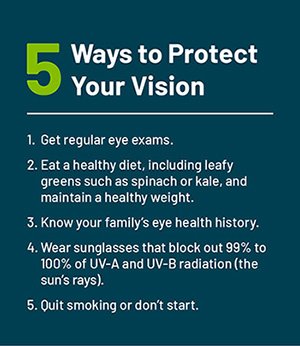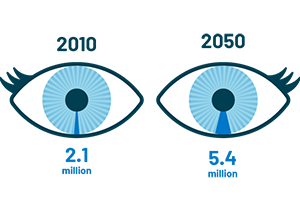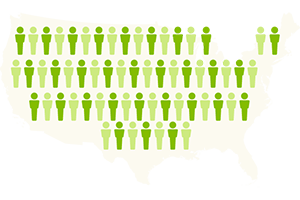
Approximately 37 million adults in America have age-related macular degeneration, cataracts, diabetic retinopathy, or glaucoma, all of which can cause visual impairment or blindness. However, recent studies show that making healthy choices and getting regular eye exams can help reduce a person’s risk of vision loss. In support of Healthy Vision Month in May, the American Academy of Ophthalmology is encouraging everyone to take charge of their eye health and preserve their sight by following some simple tips.
- Wear sunglasses (even on cloudy days!). It can help prevent the formation of early cataracts by filtering ultraviolet (UV) rays from the sun. Look for sunglasses that block out at least 99% of both UVA and UVB radiation. Bonus: Add a wide-brimmed hat when you’re out and about for extra protection!
- Eating healthy is good for your eyes! In fact, a diet rich in a variety of fruits and vegetables—especially dark leafy greens, like spinach or kale—is important for keeping your eyes healthy. Research also shows that fish high in omega-3 fatty acids—like salmon, tuna, and halibut—can help protect your vision.
- Regular physical activity can boost your mood, reduce stress, help you stay at a healthy weight—and protect you from serious eye diseases! Anything that gets your heart beating faster can help keep your eyes healthy—try going for a quick walk after work.
- Blinking keeps your eyes lubricated. If you spend a lot of time at the computer or staring at your phone, you may forget to blink—and that can tire out your eyes. Try using the 20-20-20 rule throughout the day: Every 20 minutes, look away from the screens and focus about 20 feet in front of you for 20 seconds. This reduces eyestrain and helps your eyes (and you!) feel better at the end of the day.
- Are you at risk for eye injuries? About 2,000 people in the United States get a serious work-related eye injury every day and people with sports-related eye injuries end up in the ER every 13 minutes! The good news is that you can help protect your eyes from injury by wearing protective eyewear like safety glasses, goggles, and safety shields. To make sure you have the right kind of protective eyewear and you’re using it correctly, talk with your eye doctor.
Get more tips to keep your eyes healthy and safe. And don’t forget to ask your doctor if you need to schedule an eye exam!


